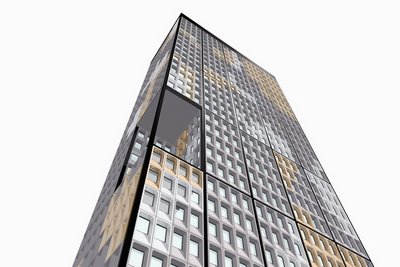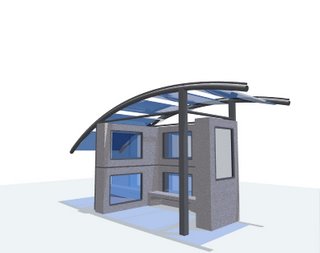Postcards of Cities' Past
This year's holiday season was the first our family celebrated without my grandmother. At last week's family Christmas, the last of her effects were offered to the family before headed to the trash. Among the display of books, jewelry and knickknacks was a sizable pile of mid-century postcards from a variety of American cities. In addition to providing a snapshot of the landmarks of Detroit, Cleveland, Nashville, Miami, Washington DC, and Chicago, many cards were the medium of war-time correspondence between my grandparents.
Below are a few city postcards among many dozens saved from the trash. A few card descriptions are quoted below:

"The Terminal Tower, Cleveland's newest skyscraper, towers 708 feet above the street level and is fifty-two stories high. It is a Ninety Million dollar project." (1939)

"This night scene depicts part of the one hundred and fifty million dollar Terminal development. The Tower is over seven hundred feet above the Union Station concourse level. An observation room, on the 42nd floor, is open to visitors." (1943)


"Busy Hotel Avenue from 17th and Collins, looking South to 10th Street."

"Bird's-eye view of downtown Chicago. Soaring pinnacles and lofty towers - symbolic of the soaring ambitions and lofty ideals which make Chicago truly the City Beautiful." (1943)

I suspect that many of these snapshots of war-time American cities don't represent most of the same fascinations of these cities today. In Cleveland, current postcards capture Gateway, the Rock and Roll Hall of Fame, and the towers of Public Square - how will tomorrow's postcards illustrate the Cleveland of the future?

Below are a few city postcards among many dozens saved from the trash. A few card descriptions are quoted below:

"The Terminal Tower, Cleveland's newest skyscraper, towers 708 feet above the street level and is fifty-two stories high. It is a Ninety Million dollar project." (1939)

"This night scene depicts part of the one hundred and fifty million dollar Terminal development. The Tower is over seven hundred feet above the Union Station concourse level. An observation room, on the 42nd floor, is open to visitors." (1943)


"Busy Hotel Avenue from 17th and Collins, looking South to 10th Street."

"Bird's-eye view of downtown Chicago. Soaring pinnacles and lofty towers - symbolic of the soaring ambitions and lofty ideals which make Chicago truly the City Beautiful." (1943)

I suspect that many of these snapshots of war-time American cities don't represent most of the same fascinations of these cities today. In Cleveland, current postcards capture Gateway, the Rock and Roll Hall of Fame, and the towers of Public Square - how will tomorrow's postcards illustrate the Cleveland of the future?










